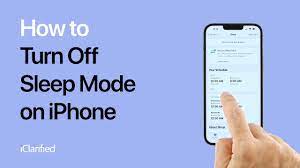Settings
Having your iPhone screen randomly light up when sleeping or in standby mode can waste battery life and could zap its charge over time. To fix this, adjust your iPhone settings so apps do not wake the display with notifications when not needed or when charging; also remove cases that interfere with proximity sensor so it does not turn on unintentionally while sleeping or standby mode is active, as well as set an automatic sleep timer so radio, iPod or AUX mode will run for shorter duration before turning itself off automatically.
Airplane Mode
Airplane Mode is an amazing feature on smartphones that lets them go into all-off mode, silencing all radio signals (cellular, bluetooth and wifi) for use during takeoff and landing flights. It was originally created so your device complied with airline rules regarding wireless devices on takeoff and landing; but nowadays its purpose has expanded into protecting battery life while out and about and protecting cellular signal strength when necessary – although GPS devices might interfere or push notifications from apps could potentially become disabled (although you have the ability to turn this off in Settings).
iPhone’s screens will remain illuminated during airplane mode unless you swipe down on their faces, which wastes battery power and may lead to an overheated phone. To avoid this problem, either disable airplane mode altogether or modify display settings within Settings: set your lock screen password before unlocking or make your phone sleep after 30 seconds of inactivity, for instance.
Make use of airplane mode when flying! By changing the setting in the Settings app and tapping General, in Control Center “When in Airplane Mode”, to either turn Wi-Fi and Bluetooth off or keep them on by default when selecting airplane mode, or keep both. This feature could prove particularly handy during takeoff and landing as some airlines permit keeping it on. To do this, open up your Apple Watch’s Settings app then General and change “When in Airplane Mode” accordingly in Control Center in general settings app then tap General again then change “When in Airplane Mode”. Change this option within Control Center by either keeping Wi-Fi/Bluetooth turned on or turning them off.
There’s no direct evidence of electromagnetic radiation from cell phones being harmful, yet some studies indicate potential concerns that it might interfere with sleep or make you tired. Even if no definitive conclusion can be drawn at this time, switching your phone into Airplane Mode might give you peace of mind.
Reduce iPhone screen brightness and disable live wallpapers to save on battery power, then change to more traditional desktop wallpapers to reduce how often your phone’s screen is on – potentially having positive ramifications on both mental health and energy savings.
Sleep Timer
Sometimes the iPhone screen remains on when it should be in sleep mode, draining its battery. A simple way to fix this problem is setting a sleep timer: when this period ends, any content – music, audiobooks, podcasts or video – stops automatically and saves both power and money! Sleep timers on TVs and stereos provide this feature, saving both power and money!
To set a sleep timer, press SLEEP and choose your desired period. The display shows this information while the sleep indicator lights up accordingly. To cancel any unwanted settings simply press SLEEP again.
Battery
Many iPhone users have reported that its always-on feature drains battery power even during sleep mode. Although Apple has yet to comment on the matter, some experts believe that its effects may be mitigated by changing settings or disabling features like push notifications.
Staying dark to extend battery life and save power. Backlights still consume energy even when not visible on-screen; keeping it dark saves power consumption. Furthermore, turning off any unnecessary features to conserve power can further extend battery life.
Some apps use up a significant portion of battery, and you can alter that using the Battery Settings on your iPhone. You can also opt out of services like location services and Bluetooth to lower their consumption.
If your iPhone has been exposed to hot environments or direct sunlight for an extended period, it may display a warning stating it’s overheating. In such conditions, it’s essential that you remove and turn off your iPhone in order to prevent permanent damage; normally it should return back to normal once its temperature returns down again; nonetheless it would be prudent to take additional measures against overheating in future.
Resetting the iPhone battery to extend its lifespan requires you to back up all your data and settings before initiating this procedure. Otherwise, all of your information could be lost should there be any problems with its life expectancy; to do so press and hold Home and Sleep/Wake button simultaneously until a “Slide to Power Off” message appears on its display screen.
